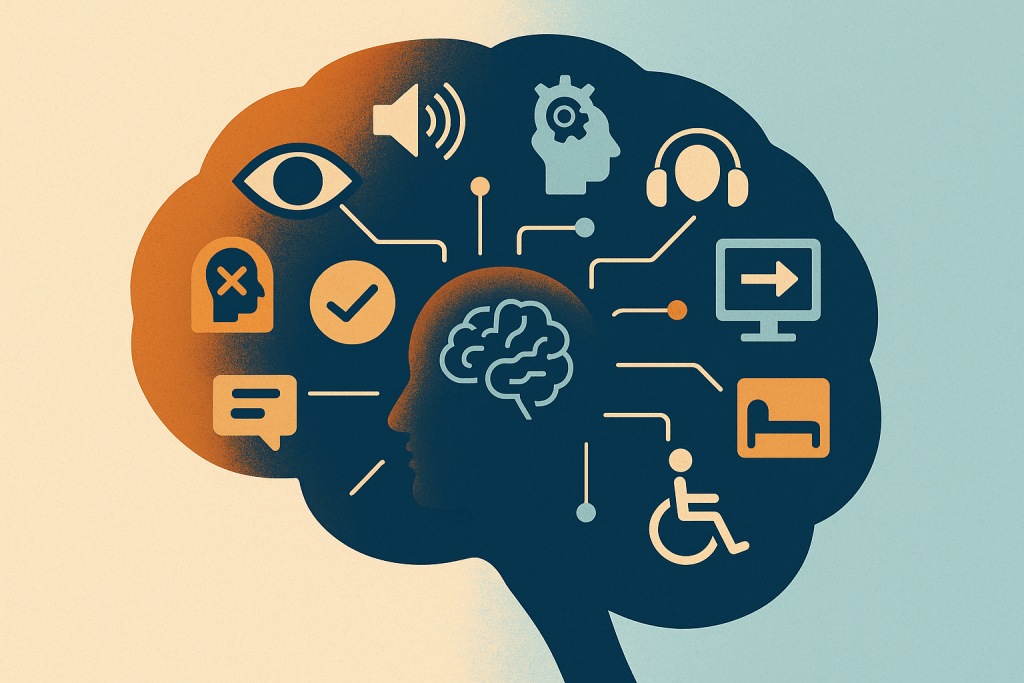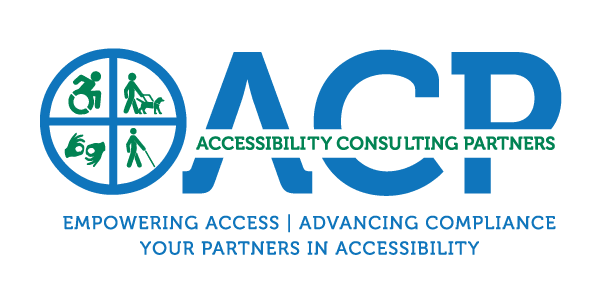When Disability Is Invisible, Barriers Often Are Too
Unlike mobility disabilities, neurological and cognitive conditions may not be immediately apparent. Yet the impact can be profound. Sensory overstimulation, confusing layouts, poor signage, a lack of quiet spaces, or inaccessible digital content can make navigating public or digital environments frustrating—or even impossible—for individuals with neurological conditions.
For example, a person with autism may experience distress in spaces with bright fluorescent lights and echoing noise. At the same time, someone with a traumatic brain injury may struggle with multitasking, memory, or processing signage in a chaotic space. The CDC provides valuable educational resources about traumatic brain injuries (TBIs). Click this link to learn more.
Designing for this population means anticipating a wide range of cognitive and sensory needs. This is what universal design and cognitive accessibility aim to address: environments that reduce confusion, support clarity, and offer choices for how people interact with their surroundings.

Nick Kelley: Why This Day Matters Personally
At Accessibility Consulting Partners, Inc. (ACP), this day carries deep personal meaning. Co-founder Nick Kelley lives with a rare neuromuscular and neurological condition, along with small and large fiber neuropathy. His experiences navigating inaccessible environments inspired him to dedicate his life to improving accessibility for others.
Nick’s condition may not always be visible, but its impact is constant, requiring him to interact with the world through a lens shaped by fatigue, nerve pain, and mobility limitations. This perspective reinforces ACP’s mission: to design public spaces that acknowledge and accommodate a broad spectrum of abilities, including those that may not be immediately apparent.
However, as Nick often emphasizes, this isn’t about him; it’s about all the individuals whose needs are frequently overlooked in design decisions, policymaking, and program implementation. World Brain Day serves as a reminder that accessibility must encompass neurological and cognitive diversity at every level.
What Cognitive Accessibility Looks Like
Cognitive and neurological acuity isn’t just a checkbox—it’s a mindset. Here are several strategies that cities, businesses, and institutions can consider:
- Clear and consistent signage with symbols and plain language
- Calm spaces or sensory rooms in public facilities and schools
- Predictable layouts and clear wayfinding in buildings and parks
- Accessible digital content, including screen reader compatibility and minimal cognitive load
- Staff training to understand and support people with invisible disabilities
These design elements benefit not only individuals with cognitive or neurological disabilities but also aging adults, people under stress, individuals with limited English proficiency, and more.
A Call to Rethink “Accessibility”
Too often, accessibility is equated solely with physical access, such as the presence of stairs, door widths, or wheelchair ramps. But for individuals with neurological conditions, the most significant barriers may be mental and environmental.
The Americans with Disabilities Act (ADA) provides a framework for access to public services and spaces, including protections for cognitive and psychiatric disabilities Yet implementation still lags when it comes to neurodivergent individuals. Only a handful of ADA Transition Plans across the country directly address cognitive accessibility in their public right-of-way or facility assessments.
Moving Forward with Intentional Design
World Brain Day is an opportunity to reaffirm our commitment to inclusive design and development. As professionals in planning, architecture, policy, and public service, we must integrate neurological and cognitive considerations into every accessibility conversation.
This means asking not just “Can someone get in the building?” but also “Can they understand the space, feel safe in it, and use it with dignity?”
At ACP, we believe that true accessibility is not visible—It’s felt. It’s the ease with which someone navigates a space, the calm they experience in an environment that respects their needs, and the dignity of being included without having to ask for it.
Let’s build spaces that work for everyone.
Want to learn more about designing for neurological inclusion in your ADA Transition Plan or public facilities? Connect with our team for guidance grounded in both expertise and lived experience.
